English
Castellano
CatalÃ
Trilobites
Author: GRINPACH
Content by courtesy of : Grupo de Investigaciones Paleontológicas de Chile
www.grinpach.cl
Reproduction of text and photos prohibited without permission of author.
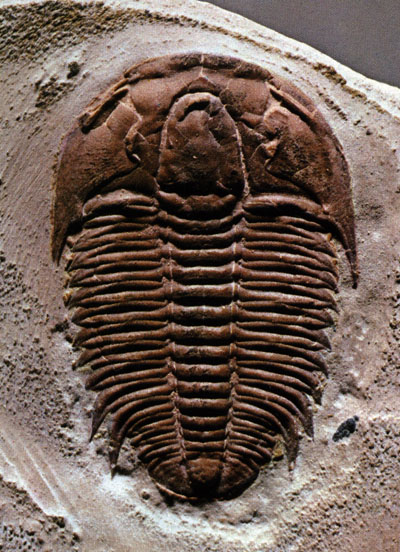
The Phylum Artropode is constituted by a quite ample group of invertebrates and is varied, with one long initiated evolutionary history in the Pre-cambrian period. The representatives of this Phylum have also reached a great variety of dimensions from the microscopic one, to 2 meters length. The artropodes include as well-known creatures as the scorpions and spiders (Arachnids), lobsters and crabs (Crustaceans), beatles and butterflies (Insects), centipedes and similars (Miriapodes), and great and important groups of paleozoic forms already extinguished, specially the group that we will show now that is the Trilobites.
Between the paleontologist the consensus exists, the artropodes evolved from the segmented aquatic worms of the type annelids, this is in evidence, since the artropodes have inherited of these, the structure of the nervous system, the way to increase the segments and the characteristic extended form of the body; nevertheless, they have developed an external skeleton that has made them lose the flexibility and the possibility of typical contraction of its ancestros.
| Phylum | Subphylum | Superclass | Class | Age |
| Artrópoda | Protoarthropoda | Onychophora | PreCambrian - Actual | |
| Euarthropoda | Trilobitomorpha | Trilobitoidea Trilobita | Cambrian - Devonian Cambrian - Permian | |
| Chelicerata | Merostomata Arácnida | Cambrian - Actual Silurian - Actual | ||
| Crustácea Myriapoda Hexapoda | Cambrian - Actual Devonian - Actual Devonian - Actual | |||
| Pycnogonida | Devonian - Actual |
Trilobites (from Latin tri = three and lobus = lobe), is an invertebrate animal of the crustaceous class, whose essential characteristic, is a body differentiated in three regions: cephalic shield (Cephalon), Thorax and 'caudal' region(Pigidio). Its evolution begins in the Cambrian Period, in the fossiliferous deposit of Burgess Shale in British Columbia (Canada), where they have appeared some artropodes like Marella and Waptia.
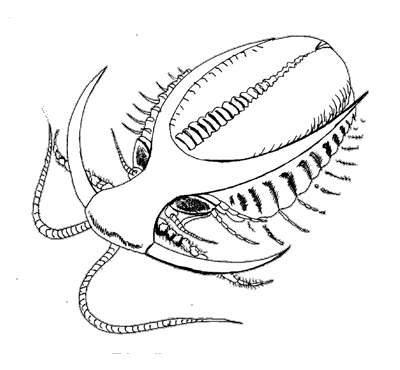
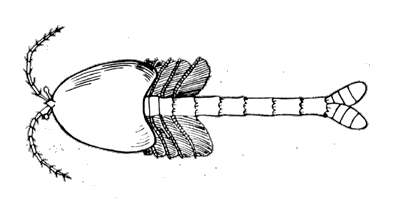
Marella splendens (J. Aragón) Waptia fieldensis (J. Aragón)
Trilobites, like artropode, has a exoskeleton that consists of a certain number of segments, some of which are fused to each other, whereas others are free. Each segment is divided in an average or axial part and lateral or pleurals parts. The dorsal exoskeleton is marked by a pair of furrows or striae that separate the axial region of the pleurals, those that have an internal relief where the muscles adhere that drive the locomotive members.
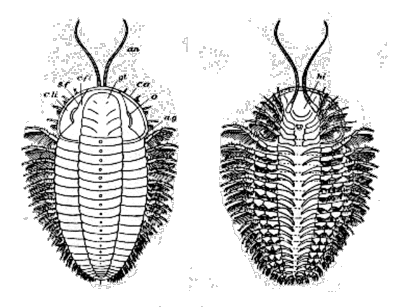
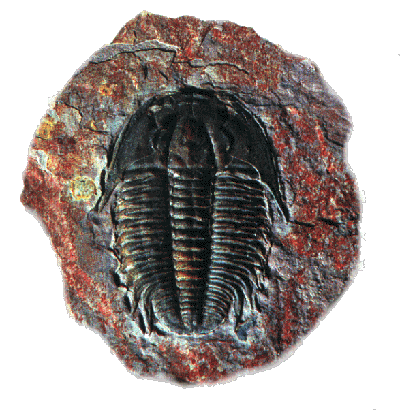
Dorsal and ventral aspect of Triarthrus becki next to a fossil that shows the trilobulated form.
The ventral exoskeleton is very delicate, for this reason it has been conserved in rare occasions, being the place in where the locomotive members or appendices are located, those that were adhered to the ventral surface below the axial striae. The members in charge of swimming are named exopodite and consists of numerous unions or conjunctures that provide a support to a series of hard and flattened structures, like prongs, that in great number form an efficient swimming system, which it served him to mobilize itself in aquatic world.
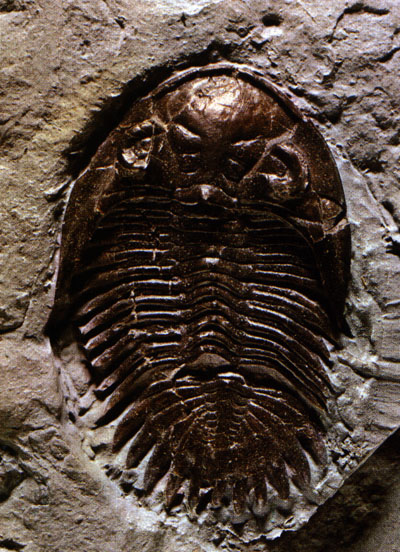
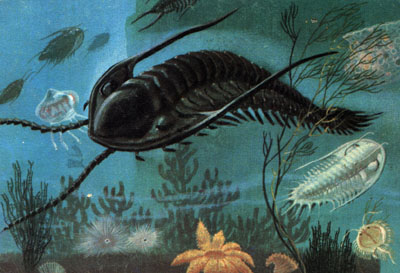
Fossil and paleoambiental reconstruction of trilobite Metacanthina barrandei of the Devonian of Morocco.
In other occasions trilobites walked or move himself in the surface of the bottom, for which used another locomotive member called endopodite, that was constituted by six strong junctions of quitinous material and that worked as a leg and it was located below the exopodite. Behind the base of adhesion of this leg an organ similar to a leaf is located called epidodite, that had to its position the respiratory function therefore, worked like a gill.
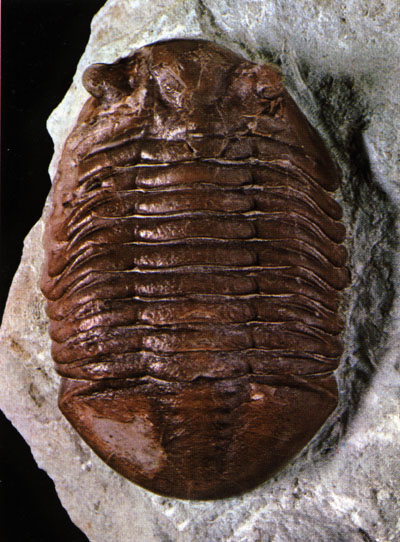
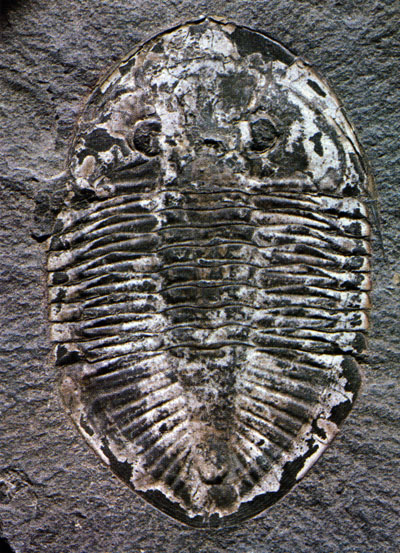
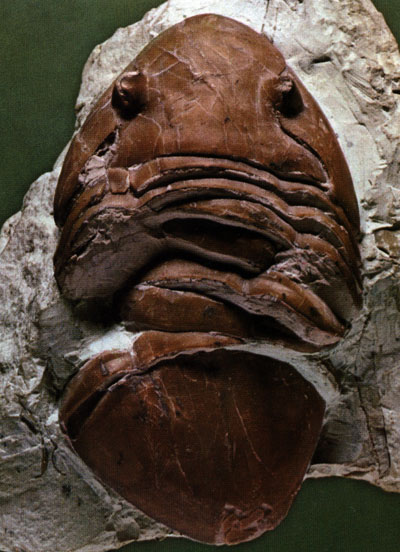
Asaphus sp. Pseudogygites latimarginatus Homotelus bromidens
(Ordoviciense)
The head or cephalon has in its central part a structure denominated glabela that shows indications of its character originally segmented, this structure is separated of the rest of the head by a furrow that crosses its periphery and that corresponds to one 'prolongation' of the axial region, whereas the rest of cephalon has a series of subdivisions which indicates or suggests at least five segments have been united to form the head the mouth of trilobites was immediately located in the average part of cephalon of the inferior side behind and underneath prominence in form of lip called labrum, to the flanks of which start the antennas.
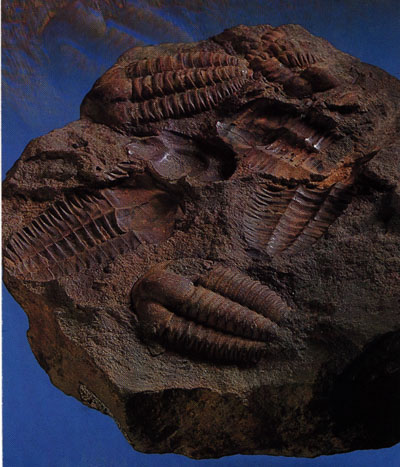
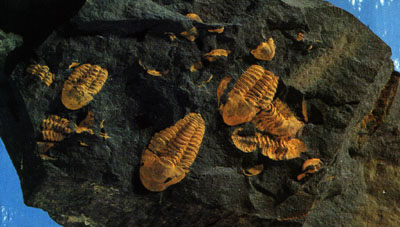
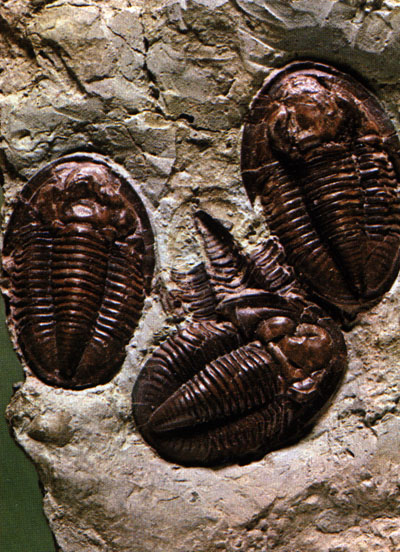
Ellipsocephalus hoffi Agraulos ceticephalus Basidechenella rowi
The eyes of trilobites are located in the mean line of the shell and to the flanks of glabela and are quite visible, these present/display very variable forms, some species are blind inhabiting zones of the mud bottom of the sea, whereas other species have eyes during their youthful state, those that soon are atrophied until disappearing in the adult age; nevertheless most of the species they have a quite effective visual system. The eyes are composed and consist of numerous called lenses omatidies, each one of which has one cheats on smooth that can be raised or dented, inserted in the round or polygonal holes; its size is small, since in the space of 1 mm It can be occupied by 6 to 14 lenses.
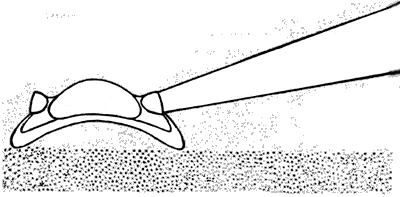
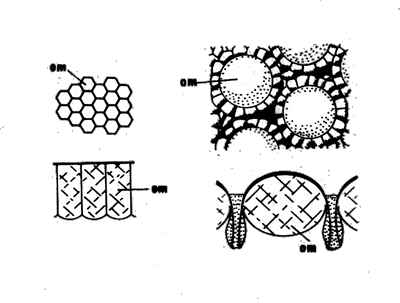
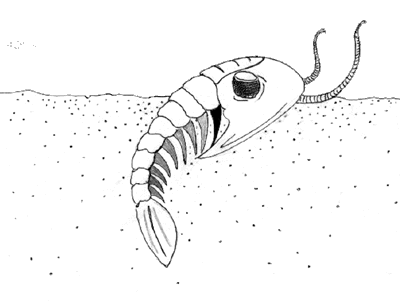
Visión de Acaste downingiae Compound eyes -------------- Vision position under the mud.
Pigidio is the 'caudal' zone of trilobites, involved directly in the swimming of the animal, this is constituted by a series of segments fused to the distal pleural zone, that in the current artropodes would correspond to the abdomen, this segmentation of pigidio is present in many species whereas in others it is completely lost.
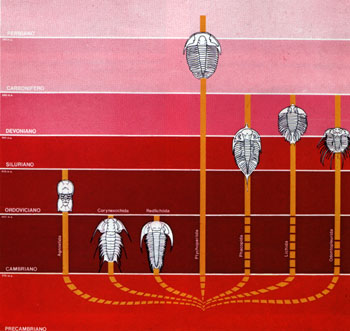
Evolutionary scheme of trilobites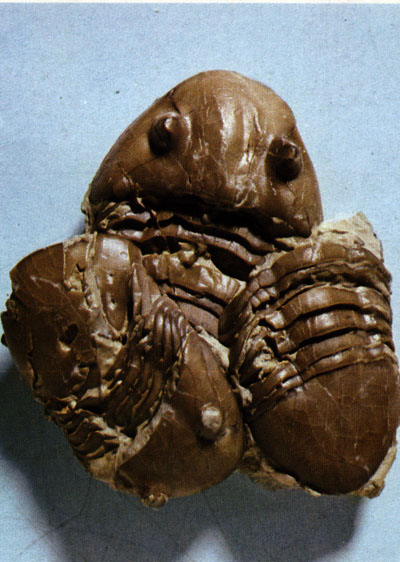
Homotelus bromidens (Ordoviciense)
Trilobites reproduces by eggs and has a period of development in which the animal undergoes different corporal changes. The egg of trilobites is incubated a very early in stage of development, because the known youngest larvae defer much from the adults
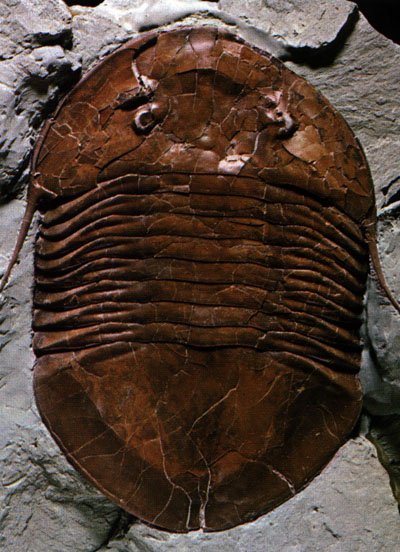
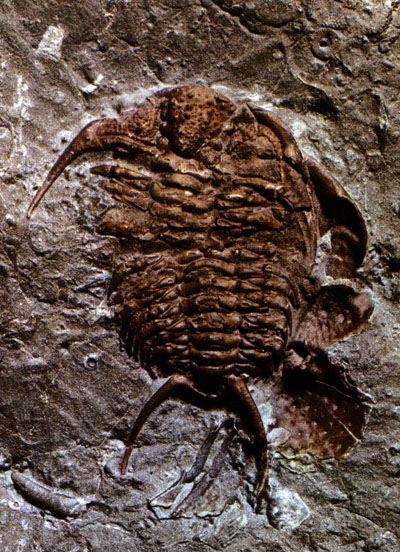
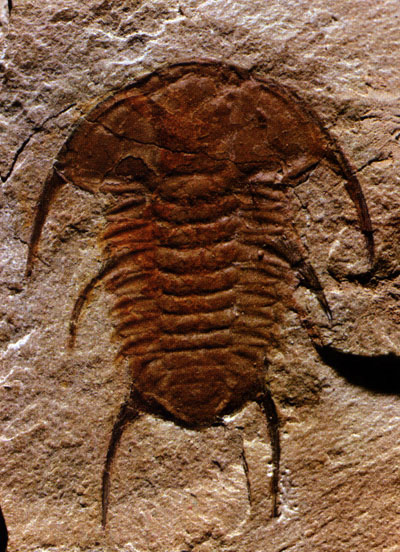
Isotelus brachycephalus (Ordoviciense) Ceraurus pleuraxantemus (Ordoviciense) Albertella helena (Cambrian).
TRILOBITES IN CHILE
The presence in Chile of this type of artropodes is little, however, we have evidence of them through some fragments that have been found in two regions of the country, both findings belong to the Inferior Devonian. First of these findings it was done in the Lila Formation, that arises in the gorge the Lila, in Pampa Chepica, Antofagasta. In the layers of this formation they were found trilobites, associated to Conularias and tracks of Annelids.
In another geographic place, this one you see in the south of Chile, specifically in Buill, the Andes of Chiloé, this locality was found trilobite Phacopoide, associated to a Chorale, the age of the layers is also of the Inferior Devonian.
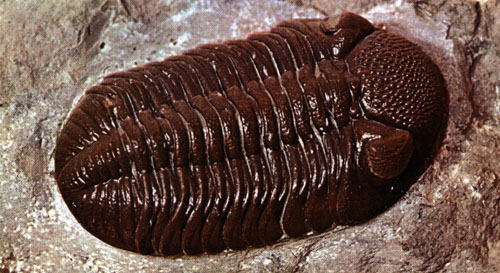
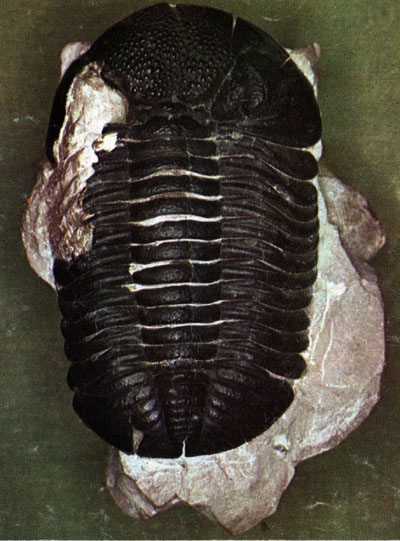
Trilobites of the Phacops sort of the Devonian of the U.S.A. similar to the appeared ones in Chile.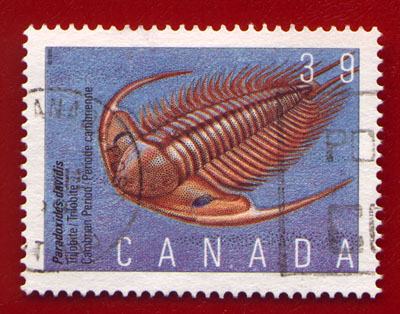
Stamp emitted by Canada in 1990 on the genre Paradoxides.
Content by courtesy of :
Information | Mineral photos | VIDEOS | Articles | Fairs | Web directory | Classified ads | Minerals Books | Shop



